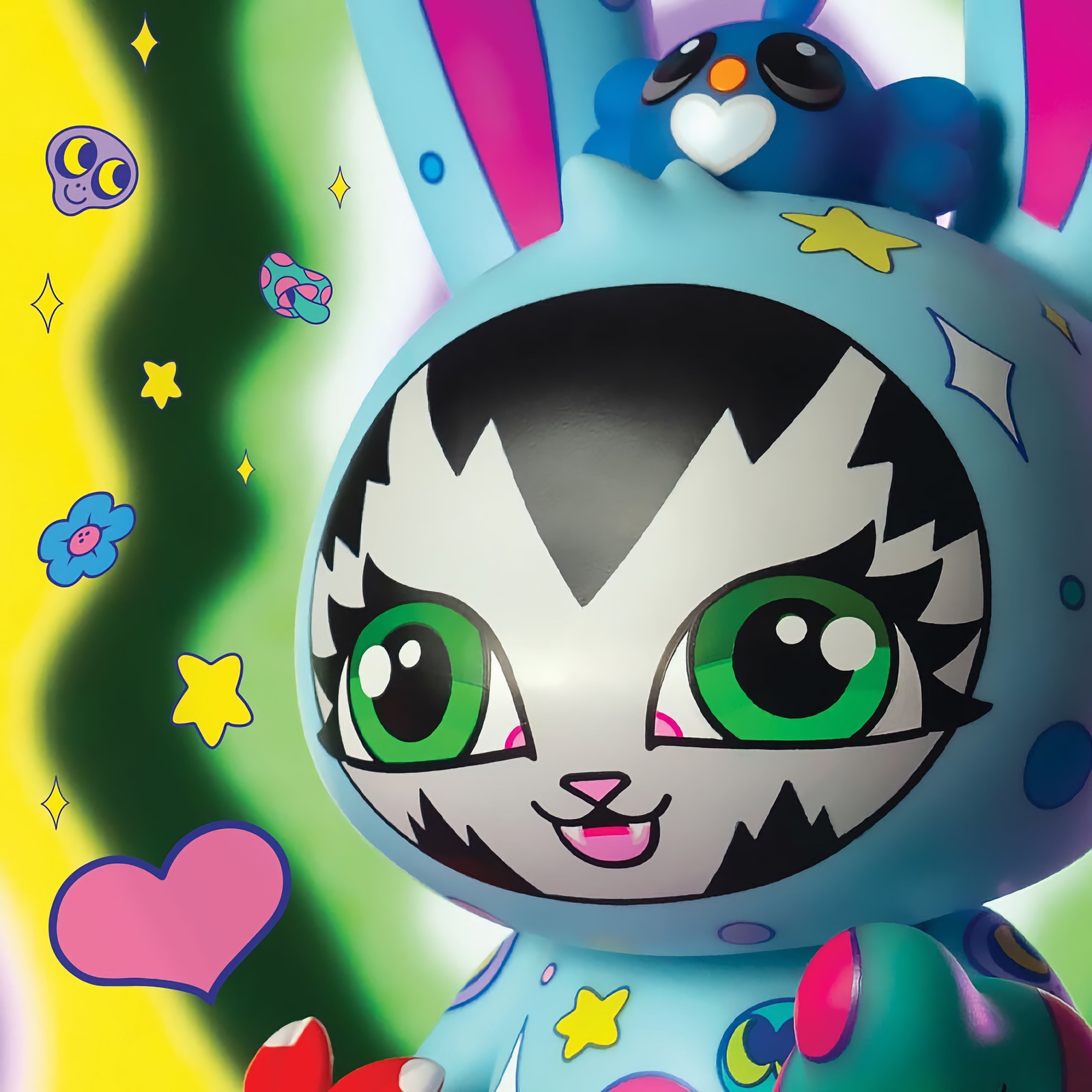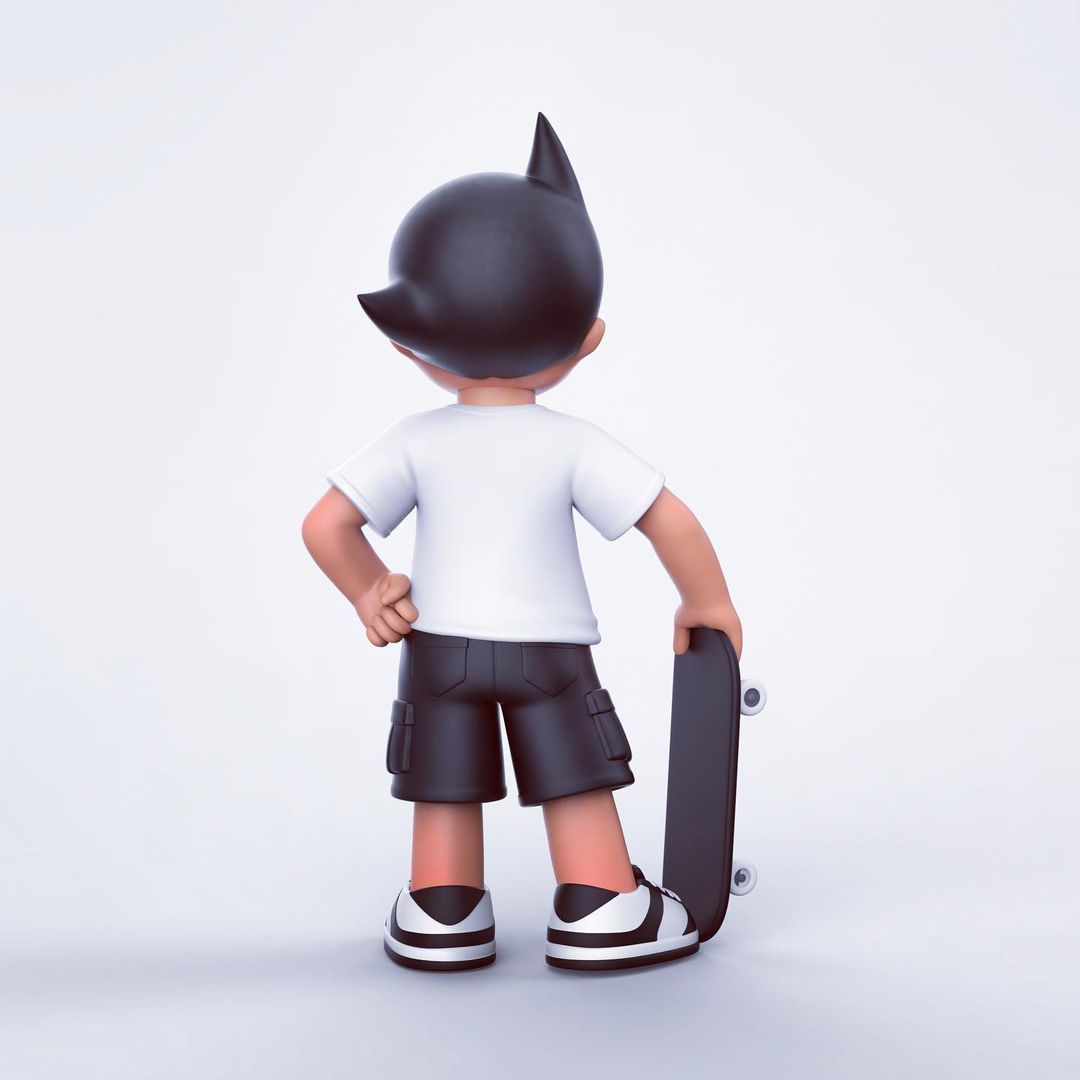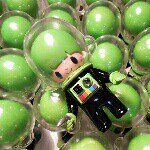First there was Kanser — Keith Poon’s Crab figure with a removable "shell". The followup (in a sense) to Kanser is the just released Kaniza, a blind-boxed mini-figure series, from ToyQube. Today we’re breaking down the series, with pics of each figure and all the info you need to know.
Kaniza features five different sea themed sculpts, each with a removable head piece (ala Kanser). There’s a mini-Kanser, a Starfish, a Cuttlefish, a Boxfish and a Hammerhead shark. The sculpts were jointly created by Keith Poon and Klim Kozinevich of Bigshot Toyworks, the company behind the manufacturing of the series. The series is nicely curated with a strong mix of artists with an emphasis on what could be considered the next wave of talent — whose only real shortcoming is perhaps the lack of instant name-recognition at this point.
In total there are 20 total figures (4 of each type) in the series from fifteen artists with additional chase figures from five of them. The Kaniza lineup features the art of Andrew Bell, Bupla, Candykiller (Brian Taylor), Charuca, Dacosta Bayley, DEVIOUS, Filth (Luke Irwin), Jesse Hernandez, Julie West, Keith Poon, Kenn Munk, Mike Burnett, Sam Fout, Sauerkids and Steven Daily. The regular editions vary from runs of 1000 to 700 pieces with the chases being limited to just 300 pieces. [Read on for loads more pics + and info on this series]
While blind-boxed figures are starting to dominate the designer toy
industry, Kaniza brings a different spin on mini-figures. First , the
figures are fairly large (4.5") or so and quite heavy. Sometimes you
see figures which feel flimsly due to their lack of weight, this is
definitely not the case with the Kaniza. They are surprisingly heavy.
Each figure uses a mix of ABS and PVC which results in a feel similar
to that of the Trexis rather than soft vinyl.
The most important difference with Kaniza is the interesting and innovative choice of primary printing technique – Wet Transfer.
Instead of directly printing the designs on the figures through either
pad printing or spray masks, Toy Qube has chosen to print the designs
to a thin sheet of material which is then adhered to the figure. The
application while not absolutely perfect (and what figure is…) is
very clean with meticulous trimming on the appliques resulting in
minimal surface area. Just enough to get the job done, and no more.
So why use Wet Transfer? The super clean "look". Since the designs
are first printed on a flat sheet, they have much cleaner registration,
detail and even shading than is likely possible with traditional
painting techniques. In other words, this approach offers the
possiblity of improved translation of an artist’s uncompromised work to
designer toys. As such it’s a key feature of the Kaniza series.
So the question is are their drawbacks to WT ? Perhaps. Some
collectors may just not like the idea but then again the upside is
the very clean graphic details. Turning the figure at an angle makes
the edges of the transfered design visible — which may bother some.
The biggest question for us at this point is durability — will the
transfered design degrade over time with knicks, bunching or peeling ?
What is certain are that because of the use of WT, the Kaniza are
some of the sharpest looking mini-figures in quite some time even upon
closer inspection. There’s none of the tell-tale hand-reoutching or
blotchy and uneven lines you find on many designer vinyl figures.
Kaniza are available now directly from ToyQube and your favorite designer toy retailer. Each blind-box figure has a suggested retail of $11.99.















